American Civil War
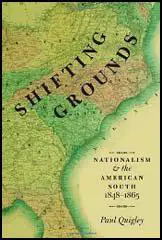
Title: Shifting Grounds
Author: Paul Quigley
Editor:
Publisher: Oxford University Press
Price: £22.50
Bookshop: Amazon
Spartacus Website: American Civil War
Category:
Between 1848 and 1865 white southerners felt the grounds of nationhood shift beneath their feet. The regional conflict over slavery that culminated in the American Civil War forced them to confront difficult problems of nationalism. What made a nation a nation? Could an individual or a group change nationality at will? What were the rights and responsibilities of national citizenship? Why should nations exist at all? As they contemplated these questions, white southerners drew on their long experience as American nationalists and their knowledge of nationalism in the wider world. Shifting Grounds tells the fascinating story not just of the radical secessionists who shattered the Union in 1861, but also of the moderate majority who struggled before and after secession to balance their southern and American identities and loyalties. As they pondered the changing significance of the Fourth of July, as they fused ideals of masculinity and femininity with national identity, they revealed the shifting meanings of nationalism and citizenship. Southerners also looked across the Atlantic, comparing southern separatism with movements in Hungary and Ireland, and applying the European model of romantic nationalism first to the United States and later to the Confederacy. Evaluating the American South in transnational context sheds new light on the ideas and motivations behind America's greatest conflict. The creation of the Confederacy and the onset of brutal war in 1861 both built on and transformed antebellum ideas. A powerful national government imposed newly stringent obligations of citizenship while the shared experience of suffering united many Confederates in a sacred national community of sacrifice. For all white southerners-Unionists, die-hard Confederates, and the large majority torn between the two-the problems of nationalism had come to matter more by 1865 than ever before.

Title: The Dogs of War : 1861
Author: Emory M. Thomas
Editor:
Publisher: Oxford University Press
Price: £9.99
Bookshop: Amazon
Spartacus Website: American Civil War
Category:
In 1861, Americans thought that the war looming on their horizon would be brief. None foresaw that they were embarking on our nation's worst calamity, a four-year bloodbath that cost the lives of more than half a million people. But as eminent Civil War historian Emory Thomas points out in this stimulating and provocative book, once the dogs of war are unleashed, it is almost impossible to rein them in. In The Dogs of War, Thomas highlights the delusions that dominated each side's thinking. Lincoln believed that most Southerners loved the Union, and would be dragged unwillingly into secession by the planter class. Jefferson Davis could not quite believe that Northern resolve would survive the first battle. Once the Yankees witnessed Southern determination, he hoped, they would acknowledge Confederate independence. These two leaders, in turn, reflected widely held myths. Thomas weaves his exploration of these misconceptions into a tense narrative of the months leading up to the war, from the "Great Secession Winter" to a fast-paced account of the Fort Sumter crisis in 1861. Emory M. Thomas's books demonstrate a breathtaking range of major Civil War scholarship, from The Confederacy as a Revolutionary Experience and the landmark The Confederate Nation, to definitive biographies of Robert E. Lee and J.E.B. Stuart. In The Dogs of War, he draws upon his lifetime of study to offer a new perspective on the outbreak of our national Iliad.

Title: The Siege of Washington
Author: John and Charles Lockwood
Editor:
Publisher: Oxford University Press
Price: £17.99
Bookshop: Amazon
Spartacus Website: Civil War: 1861-1865
Category:
On April 14, 1861, following the surrender of Fort Sumter, Washington was "put into the condition of a siege," declared Abraham Lincoln. Located sixty miles south of the Mason-Dixon Line, the nation's capital was surrounded by the slave states of Maryland and Virginia. With no fortifications and only a handful of trained soldiers, Washington was an ideal target for the Confederacy. The South echoed with cries of "On to Washington!" and Jefferson Davis's wife sent out cards inviting her friends to a reception at the White House on May 1. Lincoln issued an emergency proclamation on April 15, calling for 75,000 troops to suppress the rebellion and protect the capital. One question now transfixed the nation: whose forces would reach Washington first-Northern defenders or Southern attackers? For 12 days, the city's fate hung in the balance. Washington was entirely isolated from the North-without trains, telegraph, or mail. Sandbags were stacked around major landmarks, and the unfinished Capitol was transformed into a barracks, with volunteer troops camping out in the House and Senate chambers. Meanwhile, Maryland secessionists blocked the passage of Union reinforcements trying to reach Washington, and a rumored force of 20,000 Confederate soldiers lay in wait just across the Potomac River. Drawing on firsthand accounts, The Siege of Washington tells this story from the perspective of leading officials, residents trapped inside the city, Confederates plotting to seize it, and Union troops racing to save it, capturing with brilliance and immediacy the precarious first days of the Civil War.
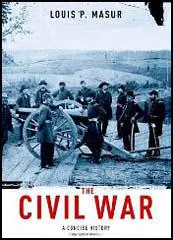
Title: The Civil War
Author: Louis P. Masur
Editor:
Publisher: Oxford University Press
Price: £11.99
Bookshop: Amazon
Spartacus Website: American Civil War
Category:
One hundred and fifty years after the first shots were fired on Fort Sumter, the Civil War still captivates the American imagination, and its reverberations continue to be felt throughout the nation's social and political landscape. Louis P. Masur's The Civil War: A Concise History is a masterful and eminently readable overview of the war's multiple causes and catastrophic effects. Masur begins by examining the complex origins of the war, focusing on the pulsating tensions over states rights and slavery. He then proceeds to cover, year by year, the major political, social, and military events, highlighting two important themes: how the war shifted from a conflict over restoring the Union to an all-out war that would transform Southern society, and the process by which the war ultimately became a battle to abolish slavery. Masur explains how the war turned what had been a loose collection of fiercely independent states into a nation with new political, cultural, and social institutions. But he also focuses on the soldiers themselves, both Union and Confederate, whose stories constitute nothing less than the American Iliad. In the final chapter Masur considers the aftermath of the South's surrender at Appomattox and the clash over the policies of reconstruction that would divide President and Congress, conservatives and radicals, Southerners and Northerners, for years to come. In 1873, Mark Twain and Charles Dudley wrote that the war had "wrought so profoundly upon the entire national character that the influence cannot be measured short of two or three generations." From the vantage of the war's sesquicentennial, this concise history of the Civil War era offers an invaluable introduction to the dramatic events whose effects resonate even today.
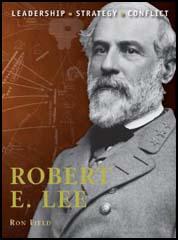
Title: Robert E. Lee
Author: Ron Field
Editor:
Publisher: Osprey
Price: £11.99
Bookshop: Amazon
Spartacus Website: Robert E. Lee
Category:
Beloved by his soldiers and respected by his enemies, Robert E. Lee is undoubtedly the most popular general in American history to fight on the losing side. This book takes an in-depth look at this southern gentleman as a strategist and a tactician, covering all of his most important victories and defeats. Although courted by Lincoln, Robert E. Lee could not fight against his native Virginia and joined the Confederacy. After assuming command of the Army of Northern Virginia, Lee ran off a string of shocking victories that left the North reeling. However, on two separate occasions, Lee led invasions into the North and both ended in defeat.

Title: A World on Fire
Author: Amanda Foreman
Editor:
Publisher: Allen Lane
Price: £30.00
Bookshop: Amazon
Spartacus Website: American Civil War
Category:
In "A World on Fire" Amanda Foreman brings her unique style of epic biography to the American Civil War. During the titanic struggle between North and South, both sides demanded Britain's support. British volunteers fought on both sides; British guns and bullets littered the battlefields. The South depended on British-built cruisers to make up its navy, and British blockade runners to supply its armies. This book portrays the extraordinary web of relationships between the two countries through the lives of over a hundred participants - soldiers, mercenaries, politicians, spies, journalists, diplomats, doctors and nurses who, at home or abroad, recorded their experience of the war. It traces the often desperate efforts of men and women to survive, to preserve the ideals and ways of living they believed were right, and even, sometimes, to find love in the worst of circumstances. "A World On Fire" is history told in the round, combining the human intensity of battle with the manoeuvrings of fraught diplomacy. We see the letters of soldiers fighting thousands of miles from their homeland; the passionate dispatches from diplomats and journalists; and the diaries of the brave women who laboured in some cases to save a single life, and in others to protect an entire way of life. This is a new and dramatic account of the first modern war and of Britain's part in it, for good or ill.
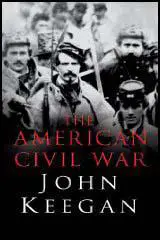
Title: The American Civil War
Author: John Keegan
Editor:
Publisher: Hutchinson
Price: £25.00
Bookshop: Amazon
Spartacus Website: American Civil War
Category:
This magisterial history of the first modern war is on the scale of John Keegan's classics, A History of Warfare and The First World War. In his sweeping, unputdownable narrative he highlights the geography, leadership and strategic logic at the heart of the conflict. John Keegan writes: "The geography of the battlefield is to me a living reality. I know the appearance of the battlefields, I know the distances between them, I know the cemeteries in which the dead were buried. What constantly puzzles me, however, is to relate the landmarks of the war to its events, chronology, strategy and logic. That war went on for so long – four years – over such an enormous space – the Confederacy covered an area as large as Europe west of Russia – and involved so many battles – 260 is the common reckoning – and so many people that its events conform to no pattern at all... The Civil War is certainly a story of the struggle of man against man; it is equally a story of the struggle of man against geography, in which those who had a feel for the country eventually succeeded because they knew how to work with the landscape instead of ignoring or defying it."
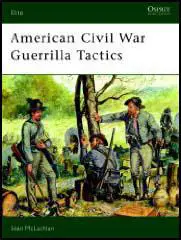
Title: American Civil War Guerrilla Tactics
Author: Sean McLachlan
Editor:
Publisher: Osprey
Price: £11.99
Bookshop: Amazon
Spartacus Website: American Civil War
Category:
While the giant armies of the Union and the Confederacy were fighting over cities and strategic strongholds, a large number of warriors from both sides were fighting, smaller, more personal battles. Beginning with the violent struggle known as Bleeding Kansas armed bands of irregular fighters began to wage war in every corner of the United States. Many of the names of their commanders have become legendary: William Quantrill, Bloody Bill Anderson, and John S Mosby - The Grey Ghost. To their own people they were heroes; to others they were the first of a new generation of wild-west outlaw. Their tactics included robbing banks, kidnapping soldiers & civilians, rustling cattle, and cutting telegraph lines. In fact, it is during the violence of the war that many of America's future outlaw legends would be born, most notably Cole Younger and Frank and Jesse James.
